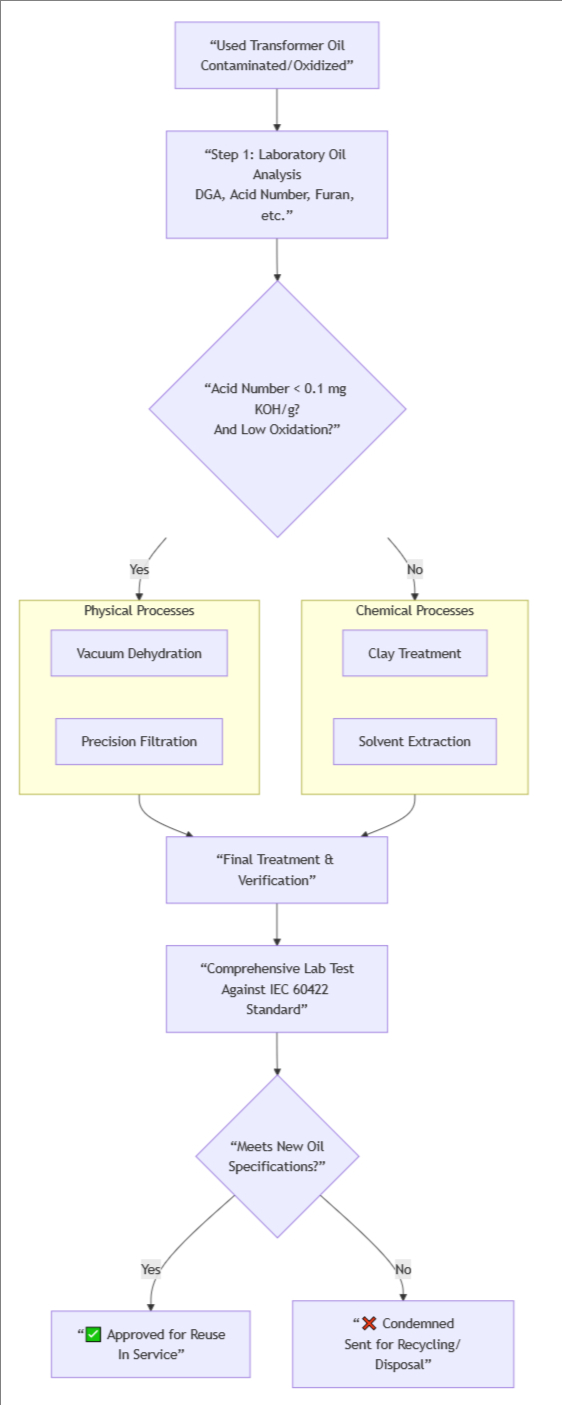E-mail seo@sino-purification.com

Time:2025-10-13 13:10:32 Reading volume:
Transformer oil is the lifeblood of electrical assets, essential for insulation and cooling. When it becomes contaminated, a critical question arises: Can this used transformer oil be filtered and reused?
In most cases, used transformer oil can be professionally purified and safely returned to service. However, this is not a simple task—it's a science-driven process that must adhere to strict international standards to ensure equipment reliability and longevity.

The first and most critical step is a complete laboratory analysis. You cannot treat what you have not measured. Key parameters determine the feasibility of reuse:
Dielectric Strength: Measures insulating ability. Target after treatment: > 60 kV (IEC 60156).
Acid Number (Neutralization Value): The most critical indicator of oxidation. A value below 0.1 mg KOH/g is typically required for simple purification. Values above this often require chemical regeneration.
Water Content: Target after treatment: ≤ 10 ppm (IEC 60814).
Interfacial Tension & Dissipation Factor: Indicate the presence of soluble polar contaminants and oxidation byproducts.
Dissolved Gas Analysis (DGA): Rules out underlying transformer faults that contaminated the oil.
Color & Clarity: A dark, cloudy appearance often signals advanced oxidation.
The choice of method depends entirely on the oil analysis results.
This method addresses external contaminants but does not reverse chemical aging.
Vacuum Dehydration: Heats oil to 50-65°C under a high vacuum (e.g., -0.095 MPa), effectively boiling off water and removing dissolved gases.
Precision Filtration: Utilizes filter carts with high-beta ratio (βx ≥ 200) elements to remove solid particles down to 1-5 microns, achieving cleanliness levels of ISO 4406 14/12/10 or better.
When the acid number is elevated, physical methods are insufficient.
Fuller's Earth (Clay) Treatment: Heated oil is passed through adsorptive clay, which removes acids, sludge precursors, and other polar compounds.
Solvent Extraction: Used for severe chemical contamination, such as removing PCBs or severe degradation products.
Before returning oil to service, it must be retested in a laboratory against the same stringent standards as new oil (e.g., IEC 60296). Never assume a process was successful without verification.
Consult Experts: Oil reclamation should be performed by trained personnel using certified equipment.
Proper Disposal: Oil that cannot be economically reclaimed must be handled as hazardous waste by licensed contractors.
Consider the Source: Investigate what caused the oil degradation to prevent future occurrences.
Professionally reclaiming used transformer oil is not just possible—it is a responsible practice for asset management. By following a rigorous process of Test -> Analyze -> Treat -> Verify, utilities and industries can significantly extend the life of their transformer oil, reduce operating costs, and minimize environmental impact.